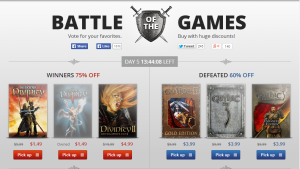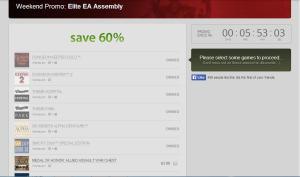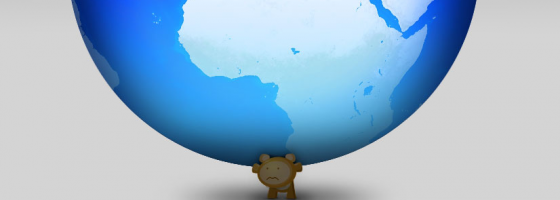GOG.com has grown over the years and has helped both old and new gamers appreciate classic games without the worry of DRM. Last time I spoke with them, we talked about the challenge of acquiring classic games to the service. For this followup, I wanted to focus on the running of a digital store that offers new and classic titles.
(The following interview was done with Piotr Szczesniak: PR specialist at GOG.com)
1. Last time on our interview (which you can find here) we talked about the work and challenges behind acquiring and re-packaging classic games for GOG. For this part I want to focus on the store side and selling these titles.
My first question is about the pricing. GOG is unique in that the bulk of your products are games that are 5, 10, 15 + years old, with cost ranging anywhere from $3 to over $20. With current indie titles it’s easy to gauge the pricing based on the market and other stores. But how did GOG determine the pricing scheme behind the classic games?
15 years?! Some of them are actually my peers and I’m on the wrong side of 30 🙂 5 years ago selling DRM-free classic games online was an entirely new concept and as such we needed reasonable and relatively straightforward pricing scheme to attract gamers to buy games which, for the most part, they have owned or at least played before.
The two initial price points–$5.99 and $9.99–were just that, us trying to keep it simple and affordable. Choosing a price point for a specific game was based on our evaluation of numerous factors all adding up to being able to answer two major questions: did the game age well, what goodies were we able to get, and how much value is there in terms of content.
If you look at classic RPG’s like Baldur’s Gate or Neverwinter Nights they remain juggernauts in terms of the actual amount of work put into the quests, characters and combat mechanics. On the other hand we have plenty of great, smaller games that are still a lot of fun if one is willing to travel back in time a decade or two and play them the way they were supposed to be played back then. For me, Sword of the Samurai was one of such recent finds – if you let it work its pixel-magic you get an incredibly addictive and rewarding game.
For games that are a fond memory for some, and for the others remain an important industry stepping stone, the reasonable choice was to bundle them together for $5.99 like we did with the earliest Wing Commanders, King’s Quests or the huge Wizardry 6 and 7 games. Some newer classics that were created less than 10 years ago, especially those that are still available in retail, are being sold at a bit higher prices. All in all, our expertise is just one side of the process – we always need to have the pricing agreed upon by the publisher.
2: In our previous interview, you mentioned that CD Projekt from the start had the plan to sell indie titles on GOG. I was wondering from a marketing standpoint, because GOG’s catalog is split between the classic and modern titles, has there been any kind of clash in terms of store branding?
Or have you noticed a synergistic relationship with attracting fans of old and new games to the service?
Obviously there are challenges in terms of coverage after re-branding–a good portion of media outlets still calls us Good Old Games, but when looking at our users’ reactions there is indeed a synergy of sorts developing in the last couple of years. As we are trying to be a much more curated service than Steam most of the new indie games we sign have a certain kinship to the classics–on one hand the creators have so much love for their game they are trying to put quality into the slightest details, on the other they have the sense of adventure and creative freedom that was the building block of the 90s game development culture.

Special sales like this engage the consumers with the ability to impact the products that will be on sale.
If you look at games like Tower of Guns, Banished, or Sword of the Stars: The Pit, you can tell they were crafted with passion and expertise.
It seems our community, above all, recognizes and respects quality so, regardless of the nostalgia factor, the issue of the game being old or new has become secondary almost instantly after our expansion to brand new titles.
3: Speaking of branding, something that I’ve been wondering is the relationship between CD Projekt and GOG. Is GOG considered a division of CD Projekt or are the two separate from each other?
Nope. We’re a separate entity from CD Projekt RED although GOG.com remains a part of the entire CD Projekt group. This means we have our own plans, goals, and projects and yet still are close enough to cooperate and do cool things together when opportunity arises–like the upcoming GOG.com release of The Witcher 3: Wild Hunt.
4: One of the always popular concerns of gamers is on the issue of DRM, which GOG has of course stated publicly that all games on the service come without any. I’m curious if this stance has caused any friction with publishers when getting contemporary or more recent games on the service or have they been fine with it?
It varies greatly from partner to partner. There are some companies that remain adamant when it comes to shedding the DRM shackles. I feel that, inch by inch, we are getting closer to signing them to our catalog but it will still take some time. The market, however, is getting more diverse in its viewpoints on DRM. Big companies like our own CD Projekt RED are dropping DRM altogether, and some other are incorporating more and more invasive anti-piracy measures.
One thing never changes though: with DRM, paying customers are getting the short end of the stick most of the time, and pirates continue to crack games at launch or even prior to the actual release of the game.
5: Let’s move on to store sales which was an interesting path for GOG. I remember for the first year of GOG, there wasn’t a lot in terms of sales until the big holiday sale that cut the price of everything in the store. Since then, there are now weekly sales, daily sales and even special themed sales which we’ll talk more about next.
Can you talk a little bit about the strategy or rationale behind GOG adopting these new sales?
Back when we started we used to have monopoly for older games which meant we were able to make decisions based on our own rationale. As you probably remember when Good Old Games launched we didn’t run many sales. Based on a viable notion that frequent, deep sales of games hurt their long-term value we tried to follow a different model. But there is only so much you can do. The market for PC games is what it is.
The life-cycle of any release is defined by launch day and sales. With new games being released practically every day each title follows a similar path: sells at launch, soon gets pushed out of the spotlight by new releases, and is revived and brought back on the gamers’ radars by sales.
As a company we have to stay competitive. Increasingly, gamers see games as worth about the same as a mobile app: they’re willing to pay a few bucks for most titles, but it’s the rare gamer who buys more than a title or two at full price in a given year. The rise of dozens of different PWYW bundles and crazy steep sales on other distributors is largely responsible for setting that trend, but we have to adapt to what gamers expect or else find ourselves irrelevant.

GOG has changed their sales strategy over the years and now the site runs multiple sales usually over any given week.
At the same time, we are trying to take advantage of sales in other, more unique ways.
Creative, themed promos that we are running from time to time keep our community active and entertained: as feedback indicates our Insomnia Promo was one of the most exciting–if a bit nerve-wracking–events of 2013 for our users.
6: Before the end of 2013, GOG experimented further in special sales, with sales that the customers controlled along with limited quantity discounts. Given the unique nature of these sales, what kind of planning and decision making were behind them?
It varies from idea to idea. Some sale formats are less asset-heavy which means we can come up with concepts for them spontaneously and we can set them up in less than a week. Other are huge events we need to be prepared for on the dev and design side, line up communications, and try to get ready for all possible scenarios (Yes, I’m looking at you Jack Keane 2).
For all our sales we’ve got to have all our partners’ approvals so we cannot make day-to-day decisions of course. Some sales though, like the Shutdown Promo are more or less spur-of-the-moment ideas that are in reaction to current events in a way that is hopefully seen in the light-hearted spirit that is intended.
7: There have been all kinds of talks about the psychology of sales on consumer behavior and how varying degrees of discounts affect them. Given that a lot of your catalog is already on the cheaper side, does GOG notice a major impact on purchasing classic games when they are on sale?
It’s tough to measure the exact impact of 60% discount versus a 75% discount – the data we have is inconclusive at best – there simply is way too many variables that have to be taken into account. You have to factor in the time of year, other promos on GOG.com that were running recently, other promos on other outlets that affected the gamer’s wallet, the number of times the game went on promo, other titles accompanying the game in question in the promo line-up, the games initial price… One thing I can say for certain is that even for cheaper games discounts increase the volume of sales substantially.
They allow gamers to buy more titles within their budget and somehow psychologically make it easier to spend, say, $10 on three titles instead of on just one game. Unique promo ideas boost sales even further and increase coverage exponentially.
8: This next question I’m not sure if you would know or if GOG actually tracks this or not. But I’m really curious about the demographic of people who are buying these classic games. As in if it’s older gamers who grew up with these games, younger gamers wanting to experience the classics for the first time or a mix between the two.
Our classic games audience is a mix of youngsters and more experienced gamers, with the biggest group of users–accounting for a bit over a third of the total number–falling into 25-34 range. Second biggest though is the 18-24 group which pretty much means that there are almost as many people coming to GOG.com for their nostalgic fix as the ones who want to check out the classics for the first time.
9: One more question regarding game sales before we move on. How does GOG plan their sales? Is it a week by week basis, a master schedule or something completely different?
It depends – organizing something like the Insomnia Promo takes a lot of time with testing, approvals, or scheduling, while deciding which games go on the weekend or daily promo is much more simple which means we treat different types of promos a bit differently. We have a master schedule for most of the regular events and we try to plan the big ones at least a couple of months in advance. We try not to come up with “let’s do this tomorrow!” sort of ideas but sometimes we can’t help ourselves…
10: One element that I like about GOG’s store is the game request page, where customers can vote on what games GOG should try to pursue next. Last time, we talked about the challenge of negotiating for the reproduction rights with the IP holders. I was wondering, does GOG ever use these votes when negotiating? Like saying ” we want your game on our service and so do all these people.”
Well, we never treat this as a trump card but it comes up often in our communication with partners. The community wishlist is also a great reference point for us when deciding which games to pursue. That said, you can bet all your money that we have been–or still are–in talks with rights owners of all the heavily wishlisted games about bringing them to GOG.com and for a variety of reasons that has yet to happen. Still whenever we land one of the more wishlisted games, like the recently added Wasteland or S.T.A.L.K.E.R. series, it’s a forum-wide eruption of joy for the community.
11: My final question is a two parter. One of the more interesting side effects of GOG’s popularity is that now other stores are selling classic games, such as Steam for example. Given that GOG basically started the classic game revival, I was wondering what your opinion is on how classic games are now spreading to other stores.
And the second part, with other places now selling classic games, in your opinion what do you feel are the major elements or unique qualities that continue to bring people back to GOG, as opposed to buying the same game on another service.
It’s wonderful that the computer gaming medium slowly but surely is getting ready to acknowledge its past. We have always stood for the freedom of choice so having the classics available on multiple online platforms is definitely a good thing – it simply means more gamers will be able to experience the history of PC gaming (and have loads of fun doing it). It’s nice to be recognized as the driving force behind the classics revival, a company whose sustained success influenced today’s market.

Many games on GOG’s site come with bonus features like wallpapers, dev interviews and more to give them added value compared to other stores.
As far as advantages of buying games on GOG.com, apart from the obvious DRM-free treatment we provide–which allows the user to play the games without any Internet check-ins and install it on multiple devices–I am pretty confident we remain the best online store when it comes to customer experience.
We’re the only store to offer a 30-day money-back guarantee on any game in the store, if it doesn’t work. The continuous support we provide for all our titles combined with the knowledgeable, bustling community of gamers in our forums make for a pretty special combination. Our upcoming expansion to Linux as well as major new projects that remain top secret for the time being prove that GOG.com remains true to its core values, while continuing to expand into new territories. Who wouldn’t want to be a part of that?!
Once again, thank you for taking the time to answer these questions and I wish the best of luck for you and GOG in 2014


